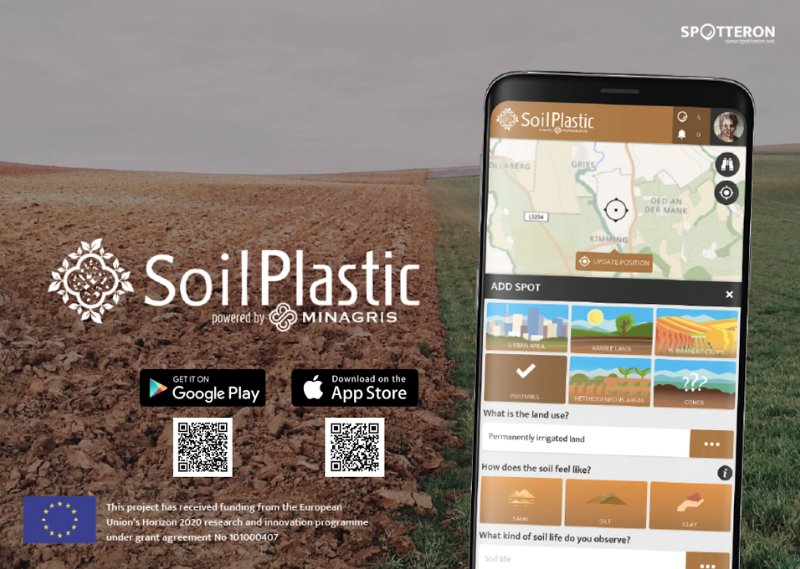PAPILLONS’ sister-project, the MINAGRIS research consortium, has developed an application, for citizens, students and farmers to help scientists understand how much plastic ends up in soils.
We share their press release below, and encourage everyone to give it a go, and contribute to the scientific research on agricultural soils!
SoilPlastic App for citizens, students and farmers: help scientists understand how much plastic ends up in soils
Available on IoS, Android, and in your desktop browser, the recently launched SoilPlastic App allows you to record your sightings of plastic in soils. With these records, you will help scientists to gain a better understanding of the impacts of plastic residues on soil health. This is a key area of research because we rely on our soils for producing 95% of our food. Access our quick-start guide here.
Plastic mulches, nets, labels, transplant trays, pipes, silage wraps, and other plastic-based items play a central role on the farm. However, a heavy reliance on these plastics has resulted in the presence of large amounts of plastic debris in agricultural fields. In addition, plastic litter is often left on agricultural fields by pedestrians. This is concerning, as when plastics break down into micro- and nano-plastics, they become small enough to be ingested by wildlife. These tiny plastic particles can even be taken up by certain plants, including apples and carrots! In addition, recent research has found that plastics can cause changes in soil properties, affecting nutrient cycling and soils´ ability to retain and store water. In turn, this makes it harder for soils to maintain biodiversity and provide the nutrients crops need to grow, potentially affecting the economic viability of farms.
The SoilPlastic App is part of the EU-funded project MINAGRIS, which is exploring the amount of plastic in soils and its impacts on soil health. We need farmers, members of the public, teachers and students to contribute by observing and documenting plastic residues. These anonymized observations will become part of our global database. By participating, you will help us to understand how much plastic is present in soils, and open your eyes to the topic of plastic in soils. We hope these observations will help farmers and other land managers to make more informed decisions around reducing how much plastic ends up in their fields, either through using alternatives, recycling plastics in a more sustainable way, or seeking ways to prevent littering.

Dr Taru Sandén, of the Austrian Agency for Health and Food Safety (AGES), who has led the development of the App, says ‘The SoilPlastic App enables citizens to become part of an international research project and to share their plastic observations from their surroundings. We hope many citizens open their eyes to the topic of plastic in the environment and use the possibilities of communicating with one another in the App.’
Prof Julie Ingram, of the Countryside and Community Research Institute, University of Gloucestershire, says ‘This new App, which has been developed as part of the MINAGRIS project, will help us to gather crucial evidence around the impacts of plastics on soil health. We hope that as many people as possible will try it out and contribute to this important research!’
So next time you’re walking through agricultural landscapes (whilst sticking to footpaths and following the Countryside Code!), why not keep an eye out for plastic debris and record your findings in the SoilPlastic App?
Not sure how to use the App or want to find out more? Check out our quick-start user guide!
SoilPlastic is hosted by the SPOTTERON Citizen Science Platform: www.spotteron.net